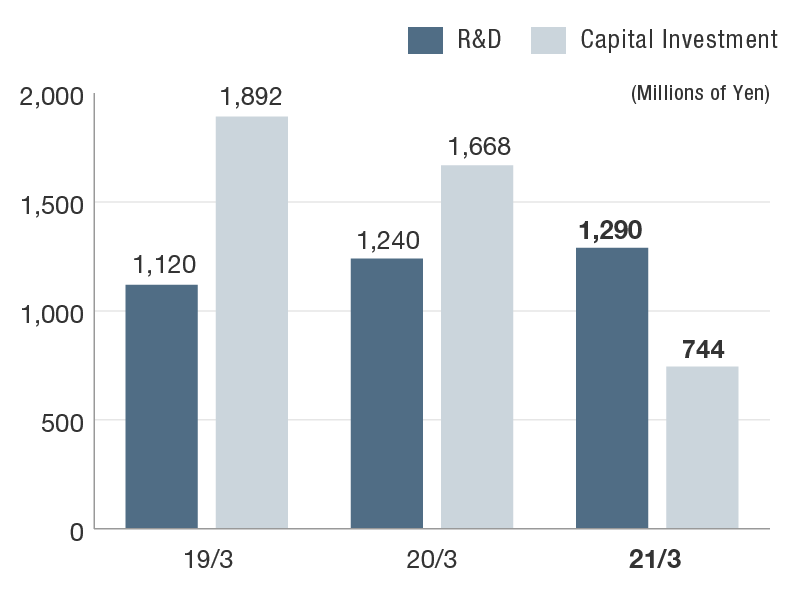Value Creation
Car Electronics
Segment Overview
The Car Electronics segment began with the development and manufacture of regulators (used for the control of stable battery charging). Products for motorcycles still account for more than 80% of segment sales. Our mainstay electronic control units (ECUs), which help to control motorcycle engines, are widely used in motor scooters in Asia, and our regulators are used worldwide. We also manufacture inverters for portable generators, converters used in eco-friendly vehicles and other products. Furthermore, we are working to expand our lineup of products supporting the use of electric and hybrid technologies in the mobility field, including the development and manufacture of quick chargers for electric vehicles.
Percentage of total net sales (Fiscal 2020)
|
Net sales |
51.8% |
■Progress under the Medium Term Business Plan
| Opportunities | Risks |
|
|
1. Enhance the competitiveness of mainstay products
Reinforce the Indian market: Shindengen is focusing efforts on India as a key growth market for motorcycles. In this market, we launched ECUs that comply with BS6, a new domestic emission standard now in effect. The application of BS6 has prompted India’s motorcycle manufacturers to shift to a new stage of considering not only cost, but also the use of technologies and products that enable compliance with environmental regulations. This has helped us quickly form trade relationships with new customers in this country. Building on this successful market entry, we continue to advance ECU development.
2. Develop growth businesses
Initiatives in the four-wheel vehicle market: We are advancing development of DC/DC converters for eco-friendly vehicles using devices produced in-house. Shindengen’s DC/DC converters are distinguished by high conversion efficiency and designed to be highly versatile in order to be easily built into various vehicle types. We are working to expand sales of these products not only for EVs, but also autonomous industrial vehicles for use in factories and warehouses. In addition, looking toward the spread of new infrastructure in the coming several years, we released a 150 kW EV quick charger.
Initiatives in electric motorcycles: We are advancing product development of power control units (PCUs) for motorcycles, for which efforts toward electrification are under way.
3. Create next-generation products that are a decade ahead
Infrastructure and other power solutions: In response to the advance of CASE technologies in the automotive industry, a diverse range of changes is accelerating across related industries. We are further reinforcing cooperation with automobile manufacturers in and outside Japan. Furthermore, we are focusing on developing and supplying quick chargers for EVs and, looking further ahead, continuing efforts to develop wireless charging systems.
R&D
This segment’s R&D was focused on the three fields of motorcycles, four-wheel vehicles and general-purpose. In the motorcycle field, in preparation for the coming spread of electric motorcycles, we advanced development of sensorless control software, which will be essential to next-generation motors, as well as price-competitive PCUs.
In the four-wheel vehicle field, in response to increasingly diverse power source specifications for specific vehicle models, we advanced development aimed at creating a versatile platform for power sources, using a common design for the core components. We also continued technological development aimed at achieving both greater functionality and cost competitiveness through labor saving.
In the general-purpose field, we advanced development of system products using rechargeable batteries and fuel cells, leveraging inverter technologies developed for engine generators.
In addition, we advanced the development of elemental technologies applicable to all products in such areas as connection strength and durability, and acquired related data.
R&D expenses in this segment came to ¥1,290 million.
Capital Investment
Segment capital investment totaled ¥744 million. Capital investment was aimed mainly at expanding production capacity at Okabe Shindengen Co., Ltd. and Shindengen India Pvt. Ltd.
R&D and Capital Investment
Highlights
The Shift Toward Electric Motorcycles
As with four-wheel vehicles, a wave of electrification is headed toward motorcycles. In particular, in many Asian countries transitioning to electric motorcycles is an important issue closely related to environmental problems, because motorcycles are a key means of daily transportation. These countries have therefore set targets for transitioning to electric motorcycles in line with their specific circumstances. However, as motorcycles are a crucial means of transportation for ordinary people, balancing the promotion of electrification and new environmental functions with price increases is extremely challenging, and the adoption of electric motorcycles is expected to be more gradual than that of electric four-wheel vehicles.
Shindengen is developing PCUs and other products using Shindengen devices, mainly for electric motorcycles equivalent in size to 100 cc or greater motorbikes and motor scooters. The shift to EVs will entail the replacement of ECUs, our current mainstay product in Asian motorcycle markets, with PCUs. However, the variety of electronic components used in motorcycles will increase, and Shindengen will do its utmost to develop products in this area.


